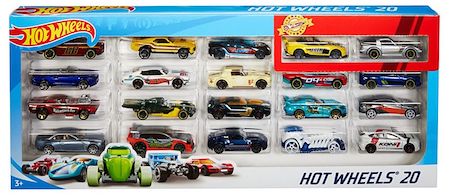During the first few years of life, the child develops intensively and the changes are truly spectacular. It’s amazing how quickly a child acquires new cognitive and motor skills and develop new abilities. He starts to understand the world better and he wants to explore it more boldly.
The best way for the child to get to know the world is when he has a caring guardian who shows him and explains everything and over time gives him more freedom to explore it independently, remaining a safe base to which a child can always return.
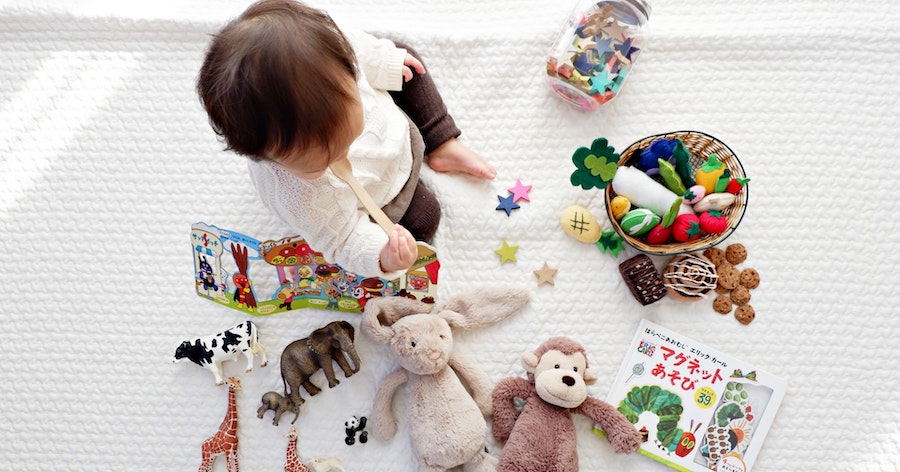
Many achievements in motor, cognitive, emotional or social development occur “spontaneously”, they simply result from child’s age, because his brain and body change and evolve and are ready to gain and develop further skills. Some skills are typical for a given age, these are so-called developmental milestones.
It is important, however, that guardians can support the child’s development and acquisition of new skills. One of the great methods supporting the child’s development in the first years of life is of course learning through play. There are plenty funny and educational games for toddlers and preschoolers!
Researchers have long argued that play supports the psychomotor development of the child, develops his cognitive abilities, way of understanding the world, as well as his social skills and emotionality.
In this article I would like to focus on a few interesting and popular games that parents can do with their children to support their proper development. These educational activities for kids attract their attention, are stimulating and entertaining and the same time.
*The purpose of this article is informative and it is not intended to replace a medical advice. If you have any doubts, questions about your child’s development, are worried about something, not sure which activities/toy you can use – consult your pediatrician or GP. SAFETY FIRST!*
Skills That Baby Can Gain & Develop Through Play
Babies are like little scientists and they love new sensory experiences. There is a lot of funny, engaging and interesting activities that support children’s natural development: their gross motor skills, fine motor skills, sense of balance, proprioception, sense of sight, hearing and smell.
To support development of crawling you can use tunnels or mats with colorful pictures, made of various fabrics that will attract baby’s attention and also encourage baby to reach and grasp. To help the baby develop their sight you can use books (during the first few months it’s good to use black & white books with yellow or red elements), for practicing hearing you can use songs or melodies with sounds of animals and birds.
Usually between 12 and 18 month babies are practicing their new ability – walking. Once the child masters this new skill, he starts to learn running, walking backwards, walking up the stairs. Every parent knows that children love to climb on various things (sofas, chairs, stairs) and how much fun it is for them. Making sure the child is safe during these activities is parents’ responsibility, but they also should make sure the atmosphere is free of fear. The child can sense it quickly and this may discourage him from further exploration and taking on new challenges.
It’s good to understand that at this age children are very active and have a lot of energy. Therefore it’s best to organizer for them lots of physical activities, adjusted to their age, supporting their development at the same time. The best plays include walking forward and backward, standing up, crouching, kneeling.
It’s also a good time for playing with a ball. Children are eager to learn how to catch the ball, how to throw and kick it.
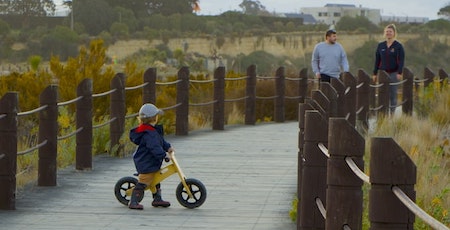
Closer toward child’s second birthday, it’s good to invest in a balance bike that will help the child to learn crucial skills for his development, but also will bring him a lot of joy.
As the child gets older he want to engage in more difficult physical activities like standing on one leg, jumping, catching moving/flying objects (like catching a flying ball or catching soap bubbles). 3-year-old kids and older love to master this type of skills. Development of a sense of balance is crucial here. Another play that will engage an active toddler and help him practice gross motor skills, as well as balance is dancing. It’s also a perfect way to practice sense of rhythm and learning new words by memorizing songs.
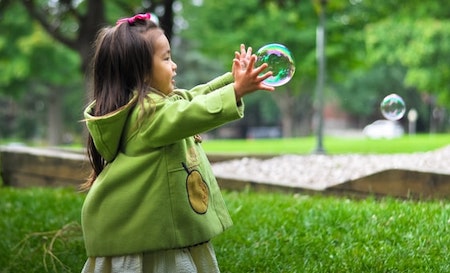
During the second year of baby’s life the eye-hand coordination gets better. The child is able to make more precise movements. Of course you can support the development of your baby’s eye-hand coordination by engaging him in manipulative activities, using soft or wooden blocks, cups, pails, spoons (make sure to always keep an eye on your little explorer so he doesn’t swallow any object!).
While playing with blocks, keep in mind that around 12-18 month the child can’t build a tower. At this point baby is usually stacking up 2-3 blocks. But around 24 month the child is usually able to build a tower of 6 blocks! It’s also important to remember that toddlers love to destroy their constructions. 🙂
Another activities that support development of fine motor skills are: crumpling and tearing sheets of paper; filling, scooping, transferring and pouring activities (like pouring water from one bowl to another, pouring pasta from one cup to another).
One of the excellent fun activities that help the child practice their fine motor skills is playing with modeling clay, dough (my kids love the Play-Doh) and of course finger painting with washable, non-toxic paints. It’s fun for the whole family! (Never leave your child unattended during this type of activities!)
The memory and attention of a 2-year-old is involuntary which means the child doesn’t remember the things he “wants” to remember, but the things that are interesting for him. If we want the child to concentrate on something, this thing or activity must be attractive and very engaging for him. And keep in mind that at this age baby has the ability tot concentrate on something for about 20 minutes top. You might have already notice that when your toddler is focused on something (like a very attractive, engaging toy or fun activity), he “ignores” everything else and for example doesn’t hear you calling him. It’s not like your child is really ignoring you. It’s just he lacks divided attention and can’ focus on 2 things simultaneously.
At this point parents can support their child’s developing memory and engage with him in games like: hiding toys, signing together, learning rhymes, memorizing and reciting easy poems. Children memorize rhymed words very quickly and usually this activity is a lot of fun for them.
Anther area of children’s skills that develops spectacularly during 12 and 36 month is their speech and language. 1-year-old baby usually can say 2-5 words, while a 2-year-old may already know even 300 words! Of course in some cases child speech skills develop later and it doesn’t have to mean there’s something wrong! If you worry your toddler doesn’t speak and/or doesn’t understand you, you should definitely consult with your pediatrician.
Of course it’s good to help the child learn new words – by talking to him and reading to him. If you have books with colorful pictures, you can also slowly show your baby what’s in the picture by pointing at each object and pronouncing its name. Then ask your baby what he can see in the picture. You can also enrich your child’s vocabulary range by describing aloud the daily activities that you do together or the child is doing on his own.
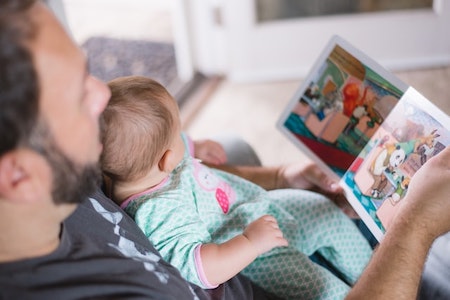
Our Favorite Funny & Educational Activities For Kids
We love learning through play! Here are some funny games and activities that we do together with our kids.
Jigsaw Puzzles
Our kids LOVE doing jigsaw puzzles. On weekends the whole floor in our living room is usually covered with jigsaw puzzles 🙂
We started with very simple ones, when they were 1-1.5 year old. We used 2-piece puzzles (like puzzle pairs) – the child needs to find two matching elements, for example yellow element and picture of yellow sun or blue element and picture of a blue cloud. This game is a perfect way to introduce puzzles – which are an awesome problem-solving exercise.
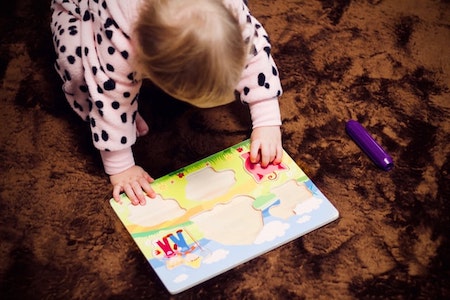
We were using 4-6-piece wooden jigsaw puzzles as well. The task was to match wooden blocks or elements together, forming an animal, flower, car or something like this. We chose jigsaw puzzles with large elements – too big for infant and toddler mouth to eliminate the risk of swallowing.
Another type of jigsaw puzzles that we used at the beginning were wooden boards with pegged wooden pieces. The boards featured a farm, jungle or ocean and each element presented an animal. The child needed to put the animal in the right spot on the board. This was a great training of shape recognition and matching elements based on a color, and funny way to learn new words too.
Then, as the children got older, we introduced standard (cardboard) jigsaw puzzles with more elements. We thought it would be awesome to use them as an opportunity to learn our kids something new (new things, new words etc.) so we invested in jigsaw puzzles featuring pictures that have educational value – we have jigsaw puzzles featuring colorful picture of human body, solar system, construction site, seasons, the ocean and its creatures, USA map and Wolds map with animals. Doing this type of jigsaw puzzles is not only a perfect way to train your brain, practice logical thinking and problem-solving, but also great opportunity to learn new words and concepts and expand knowledge about the world. Of course our kids love jigsaw puzzles with Peppa Pig or scenes from the Frozen Movie and we have those in our collection too!
When our kiddos were about 3 years old they started doing bigger jigsaw puzzles – consisting of 50 elements and more. Of course we were still using the ones with big elements – easy to find and easy to grab for little hands, too big for kids mouth at the same time.
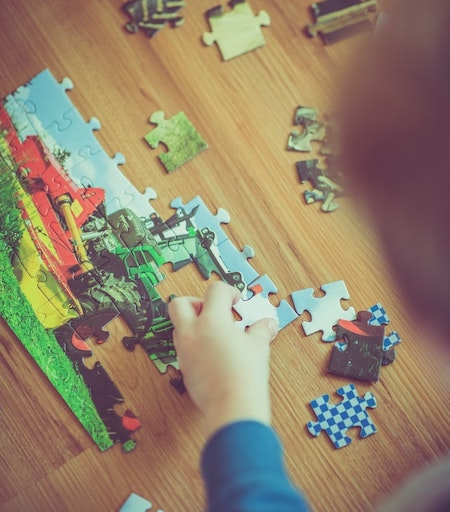
Doing jigsaw puzzles has many benefits. It’s a great exercise for the brain, and a wonderful way to spend time as a whole family. This activity engages both hemispheres simultaneously, because it requires logical thinking, as well as imagination and creativity. It helps to develop spatial abilities, memory, concentration and perseverance in pursuit of the goal. It is also an invaluable help in learning how to write and read, because the child can simultaneously learn new words – names of objects, animals, plants, geometric figures, colors, vehicles, activities, etc.
Jigsaw puzzles are also an excellent opportunity to develop fine motor skills, to train little fingers, movement prediction and eye-hand coordination. During this activity kids have the chance to learn how to cooperate with others, as well as to build relationships.
Sorting & Classifying
Another activity that is not only developing for the child, but also gives him a lot of joy is sorting, classifying and other similar tasks. We invented our own game to practice these skills. Don’t worry – you don’t even have to spend money on another toy, you can use the toys you already have for this activity – like we do.
My boys love to use their collection of small cars (Hot Wheels) in our “sorting game”. And how do we play this game? It’s pretty simple. We compete with each other to make the longest snake or traffic jam with these small cars. But to make this task more challenging, there are certain rules that we have to follow when we are playing – we can only use cars that meet the given criterion (like the car type or color).
Here are some criteria that we use for sorting:
- One person is collecting cars in dark colors, the other person can use only cars in light colors
- Normal cars vs emergency cars
- Type of the car (convertible vs SUV)
It is worth giving the child the opportunity to choose the criterium. You may be surprised with his imagination. 🙂
This type of activity helps to develop perception of similarities and differences, perception of patterns, and categorization, which are very important cognitive skills.
This is also an opportunity for kids to learn healthy competition. If more people take part in the game, you can also use it as an opportunity to learn cooperation and divide the participants into groups of 2.
Role Playing
Probably every parent knows about the importance of this activity. There are multiple ideas that you and your kids can use: playing house, playing doctor and patient, playing knights who ride horses and fight with swords (you can use small tree sticks as swords), playing firefighters, playing policemen… My boys love to play policemen giving tickets LOL!
This game allows the child to develop social skills and learn behavioral norms in certain situations, and can also help the child to get used to certain situations, so that later, when something happens in reality, the situation is more clear and less stressful for the child, he knows how to behave in it and this may reduce his anxiety (for example doctor-patient role play or dentist-patient role play).
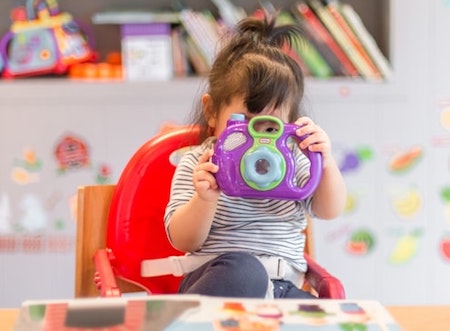
It is also a great opportunity to learn new skills, words, activities that are typical for certain professional or social roles, and the principles by which the world functions. It also allows the child to learn self-reliance, and in the long run – become independent. It is also a wonderful way to learn cooperation and empathy.
Of course, role playing also has a huge positive impact on the development of creativity and imagination. It is worth to give the child freedom to be as creativity as he can be, while setting certain rules and ensuring safe environment. Role playing can also have a therapeutic function, allowing the child to relieve stress and negative emotions, gain courage and confidence in situations that usually cause stress or anxiety in him. In this way, we can help a child experience difficult emotions in a safe environment.
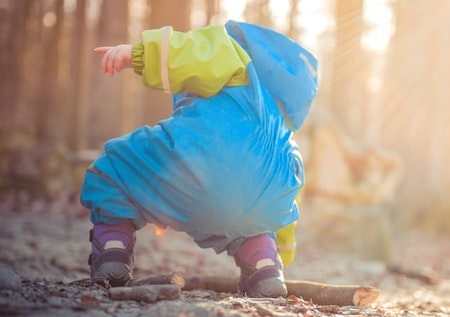
Mazes
There are different types of mazes, depending on the child’s age. You can start with wooden cubes with beads – this may be a fun toy for an infant who is able to sit upright (even if he doesn’t know the real purpose of it yet) – colorful beads will occupy him for a while.
When the child is about 3 years old you can try a printed maze, at first something really simple. Show him and explain slowly how to do it, do it a few time with him at the beginning. You don’t even have to buy any books with mazes, you can find plenty of printed mazes (at different levels of difficulty) online!
Introducing mazes at an early age (3-4 y.o.) can help instill a passion for puzzles in your child. As doing mazes requires engagement and focus, it helps to improve and increase concentration power. This is also a perfect opportunity to practice logical thinking, spatial orientation and graphomotor skills. In the long term, doing mazes may have beneficial effect on child’s mathematical skills.
This type of activity may be also calming and relaxing for the toddler.
Play Dough & Modeling Clay
At our home we started playing with dough and modeling clay quite early, when our boys were about 2 years old (we always use Play Doh, our kids love it). At first we were forming balls, rollers, various patterns using molds and tools, while the kids were destroying it LOL. As they got older they began to get more involved and form different shapes on their own.
We invested in some sculpting and molding tools for shaping, cutting, rolling and molding the clay and dough stamping cubes, rolling pins, patterned wheel press, toy scissors, cookie cutters, number and letter cutters, and the thing that our kids love most: noodle maker!
It’s amazing how this activity occupies children – our kiddos can focus on it even for an hour or two!
It’s a great fun not only for the 3 or 5-year-old, but for parents too! 🙂 And it has other positive effects on child’s development. First of all, playing with dough or clay stimulates imagination and creativity. It’s also a great training for concentration power. It helps to develop fine-motor skills (manual precision and dexterity) and practice eye-hand coordination.
Generally speaking, play dough and modeling clay are a wonderful way to exercise your brain! It’s a universal toy, interstice and attractive for kids almost at all ages! And of course it’s an amazing, bonding activity for the whole family.
Magnetic Letters
For the third birthday our boys got magnet board with magnetic letters and numbers which we use for learning them word building, basic grammar, spelling and reading. Numbers are also useful for practicing math skills with our 6-year-old daughter.
All magnets are colorful and you can also write and draw on the board so learning is even more funny and engaging. Besides, the size of magnets is perfect for small hands – and practicing fine motor skills at the same time.
BTW, if you don’t want to spend money on the board, you can always use your fridge LOL! 🙂
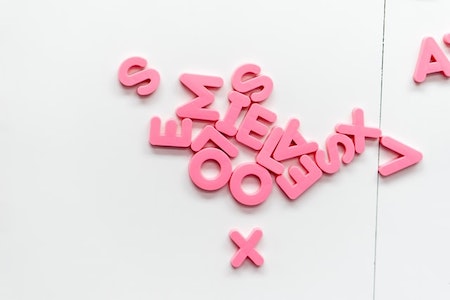
Chalk Board + Playing Charades
A few years ago we created a chalkboard wall in our daughter room and we still use it with her and the boys for drawing, learning alphabet, practicing spelling, writing and reading.
As the boys got older, we started playing charades and we use the chalkboard wall for drawings. It’s super fun for the whole family, I promise you!
It develops children’s creativity and imaginations, reinforces reading skills and helps to expand vocabulary. It’s also a great way to practice gross motor skills. During playing kids learn how to overcome shyness and build confidence.
Finger Painting
This is one of our kids favorite activity. Boys got finger paint for their third birthday and for a month they were asking every day after coming home from kindergarten if they can play with it!
We bought a huge cardboard rocket (for self-assembly) that a child could enter. And as the rocket was all white, children could paint and decorate it as they liked. They created real masterpiece and they were really proud of themselves.
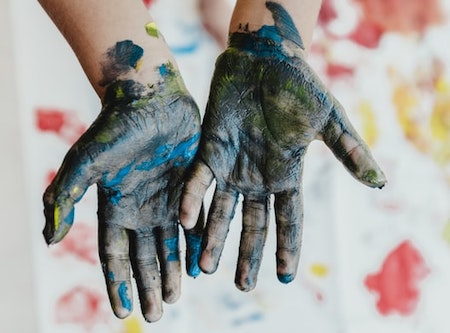
Why finger painting is recommendable for toddlers and older kids?
It is a perfect opportunity for kids to let their imagination run wild and to develop their creativity. They can experiment with mixing colors, and it often turns out that they are so much more creative and bold than their parents. 🙂 It’s the perfect time for tactile experimenting too.
Finger painting is entertaining, engaging, and what’s important – it’s beneficial for kids development. It supports fine motor skills development as it allows to practice precise movements of hands and fingers. It may also help to learn new words – you can write colorful words with your fingers too!
Nowadays there is a wide choice of non-toxic, washable paints for kids for finger painting, at different prices, so you should be able to find something for you and your little Picasso. 🙂 I must admit we started finger painting a bit late, there are paints suitable for toddlers from 12 months and up.
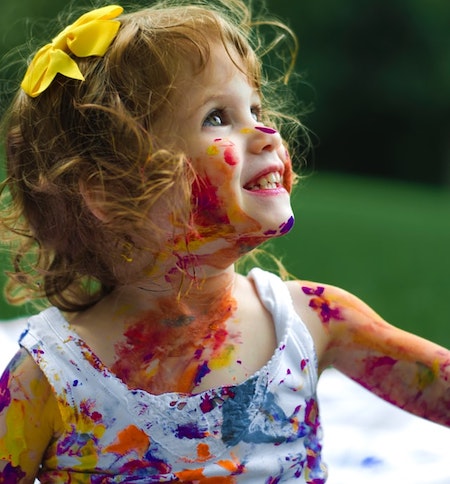
I decided to update this post and add our favorite activities in the last few weeks. Since we’ve had much more time at home lately, we came up with two new activities that engage our whole family!
So here are our two new favorite activities that are fun and great for stimulating toddler’s and older kid’s brain:
Lego City
Lately our kids became huge fans of Lego City and now our living room is full of building sets… We have police cars, fire trucks, police helicopters, diving yacht, street sweeper, donut shop and even an ice-cream truck! Even though some sets are recommended from 6 years, our 4-year-old boys quickly mastered them! Of course they require parents’ help most of the time, but they became really good at reading and following instructions and they love spending hours on building new things.
Lego City is fantastic alternative for jigsaw puzzles, our kids got a bit tired of doing them and switching to Lego was a great solution. Besides, it’s an awesome way to spend more time together.
Lego City is perfect for practicing fine motor skills, exercising precise finger movements and of course it encourages imaginations and building skills and helps to develop spatial skills. I must admit, this is not a cheap activity, each set is quite pricey, but they can engage kids for long hours and they are an excellent training for young brains!
Moreover, the sets are really good quality and hold up well even after extensive use. I was surprised how detailed these building sets are and how quickly kids become better in this thing than their parents! And to be honest, I love building those Lego sets too! It’s so much fun for the whole family.
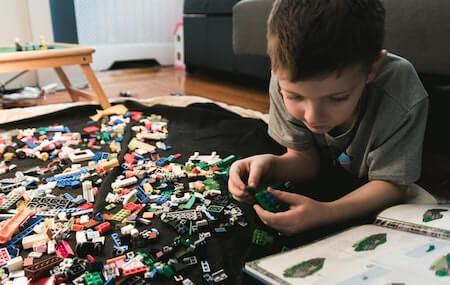
Once the new vehicle or building is ready, they are perfect for engaging in role play. Our boys love playing in police chase or tuning workshop where they can repair cars from their Hot Wheelz collection that I’ve mentioned above.
Keep in mind that Lego City usually contains lots of small pieces, so if you want to do them with younger kids, always keep an eye on them to make sure they are playing carefully and safely.
Trips To The Forest
Near our house we have a nice forest, which we like to go to at any time of the year. We spend a lot of time there recently. What do we usually do in the forest?
-We run/walk/hike with strollers – We love running, also on demanding terrain, that’s why running with a stroller in the woods is the perfect solution for us. Our 4-year-old boys are obviously to young to keep up with up on long distances and bumpy terrain. Sometimes we also go for long walks in the forest, and there’s a lot of bark chips, brunches, mud, rocks and other obstacles, sometimes we hike, and strollers are very handy then. Therefore for us, strollers are still very useful for our big and older kids! We have BOB strollers with roomy seats, which are still very comfortable for 4-year-olds and for them these trips to the forest are also great fun. Along the way, we come up with some creative activities: we learn the names of trees, plants and birds.
| *Yes, sometimes we still use strollers with our 4-year-old kids. They are very useful on longer distances when the child gets tired, for jogging (like in our case), as well as in some cases when the child has a medical condition. There are lots of big kids strollers that can fit toddlers and preschoolers, suitable for multiple types of terrain. Next time you see a parent with older child in a stroller, please don’t jump into any conclusions and don’t judge. 🙂 |
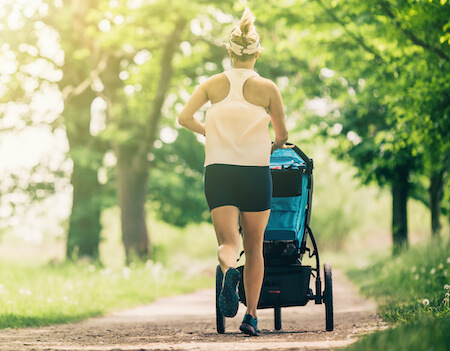
-We are building a hut – it is a great activity that engages the whole family and it is so much fun for older children. And even though our hut is not big enough to fit our whole family, it is still an awesome activity, because it teaches children to cooperate, help each other in pursuit of a common goal, and also develops their creativity, imagination and spatial skills and building skills. By the way, it’s a fantastic form of physical activity, which is very useful because toddlers and preschoolers have LOTS of energy.

